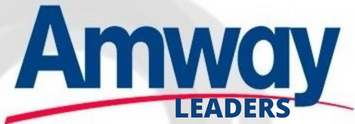One of the things that many Amway Independent Business Owners (IBOs) do not understand is where the upline diamond income come from in reality. They believe they will get passive residual income, but the majority of them are unsure of how it works or where the money comes from, if at all. In its place, the majority of individuals see a photocopy of an upline's check, or they may see the upline driving a fancy car or something similar. They have little understanding of how the business operates, let alone the notion that there are two enterprises operating simultaneously. The Amway business opportunity as well as the tools (business support materials) company are both discussed in detail. To be honest, most independent business owners would be better off writing a check to their upline for $50 every month and never being involved in the Amway offer in the first place.
Upline diamonds (or higher-ups) receive a portion of the revenue generated by the movement of products. Amway pays out approximately 33 percent or more of their gross revenue in the form of bonuses. The majority of IBOs (those who are actively expanding their businesses) earn 3 percent of the incentive, with uplines receiving the remaining 30% of the bonus. When you stop to think about it, it's not such a bad deal. Furthermore, the majority of IBOs overspend on Amway items. They are not merely substituting for what they would typically purchase. There would be a slew of former IBOs who would continue to move 100 PV or more if this were the case. Instead, when an IBO decides to leave, they either stop buying anything from Amway or only use a few things here and there from the company. The offer, as well as the manner in which it is advertised, merely serves to artificially increase demand for Amway products. If the products were truly that good, why aren't Amway sales soaring after 50 years in business, especially if former Amway IBOs become addicted to the products and continue to purchase them? The truth is that people often cease buying once the "dream" of earning residual income is no longer a realistic possibility.
Then there's the tools industry, where IBOs are only entitled to a meagre 3 percent of the company's income. All of the tool profits are retained by the uplines. Additionally, the profit margin on the tools is bigger than that of Amway products. While this appears to be acceptable on the surface, it is important to remember that the instruments are ineffective. There is no unbiased evidence that I am aware of that demonstrates that the instruments cause a natural progression of IBOs from 0 PV to diamond as a result of their use. Since I left the diamond business in 1997 or 1998, I can't think of more than a few new diamonds that have been discovered in the United States. In addition, even if there were a few new diamonds, I believe there were many more who stopped or left Amway for a variety of reasons. One could wonder why a diamond would decide to stop working in the first instance if there was indeed residual passive revenue at stake.
So, where do the revenues from the upline originate from? It's simple: it comes directly from the pockets of those in the downline. If IBOs were to really sell items, some of the income would come from sales and customers, not from commissions. Instead, the vast majority of Amway sales are made simply from upline to downline. Furthermore, practically all sales in the tools industry are generated from upline to downline. As a result, many IBOs spend $250 to $300 per month on products and receive a $10 reimbursement if they hit 100 PV. When you add in the $100 to $250 a month that IBOs spend on tools, the picture becomes even more complicated. Suddenly, that low-risk or no-risk option doesn't seem so low-risk anymore. IBOs can easily rack up tens of thousands of dollars in expenses over the course of several years if they continue to work the business.
That is where the profits from the upline are generated, guys. If you do the math, the vast majority of IBOs would be better off writing a check to upline for $50 a month and doing nothing else.


0 comments: